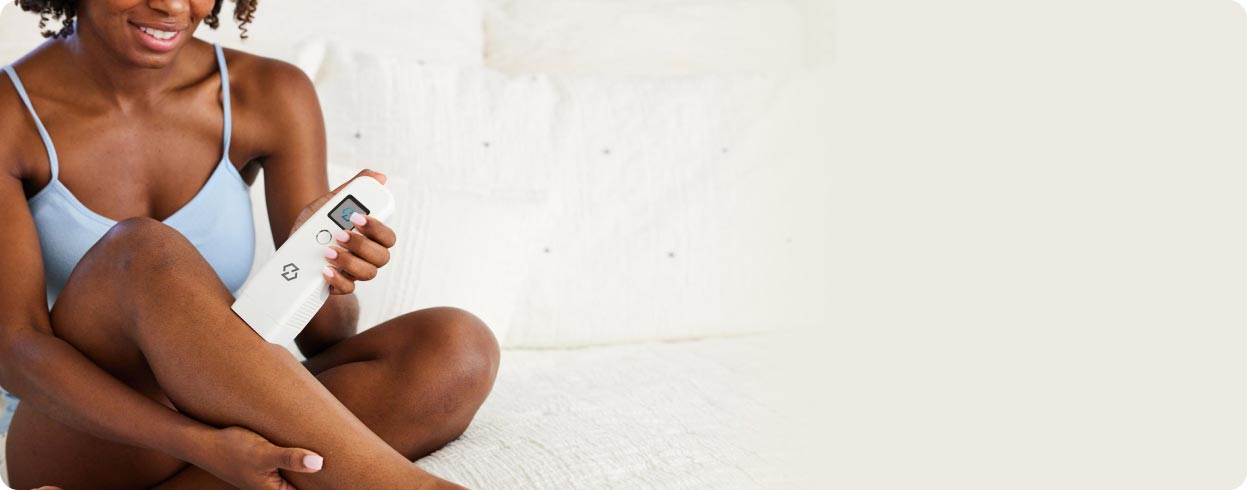Zerigo Health is a smarter way to deliver at-home, clinical grade, NB-UVB phototherapy treatment for patients with chronic skin conditions like eczema and psoriasis and may be available at no cost through an employer or sponsoring health plan1.
The Zerigo all-in-one solution
features:
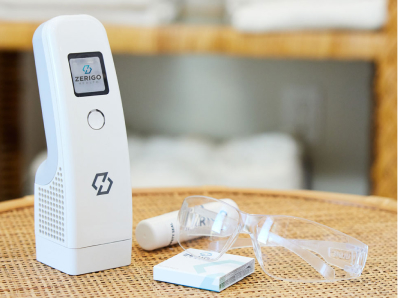
An FDA-cleared2, handheld, NB-UVB Smart Light Therapy device. Patients can treat the symptoms of psoriasis and eczema safely and effectively—in the comfort of their own home.
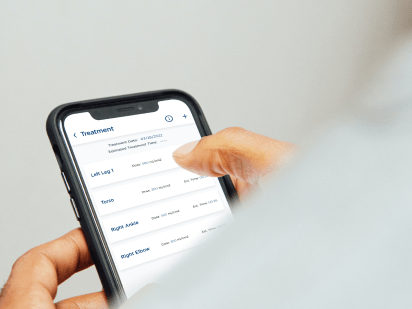
The Zerigo Health app manages NB-UVB dosing, treatment frequency, and duration in adherence to your prescription. Automatically calculates and delivers doses, sends patients treatment reminders, tracks their results and keeps them connected to our expert care team.

ZerigoCare™Guides provide one-to-one support by walking patients through first-time use, weekly treatments, monitoring their ongoing progress, adherence, and results. Our care team consists of phototherapy experts in addition to RNs, MAs, and CHWCs.
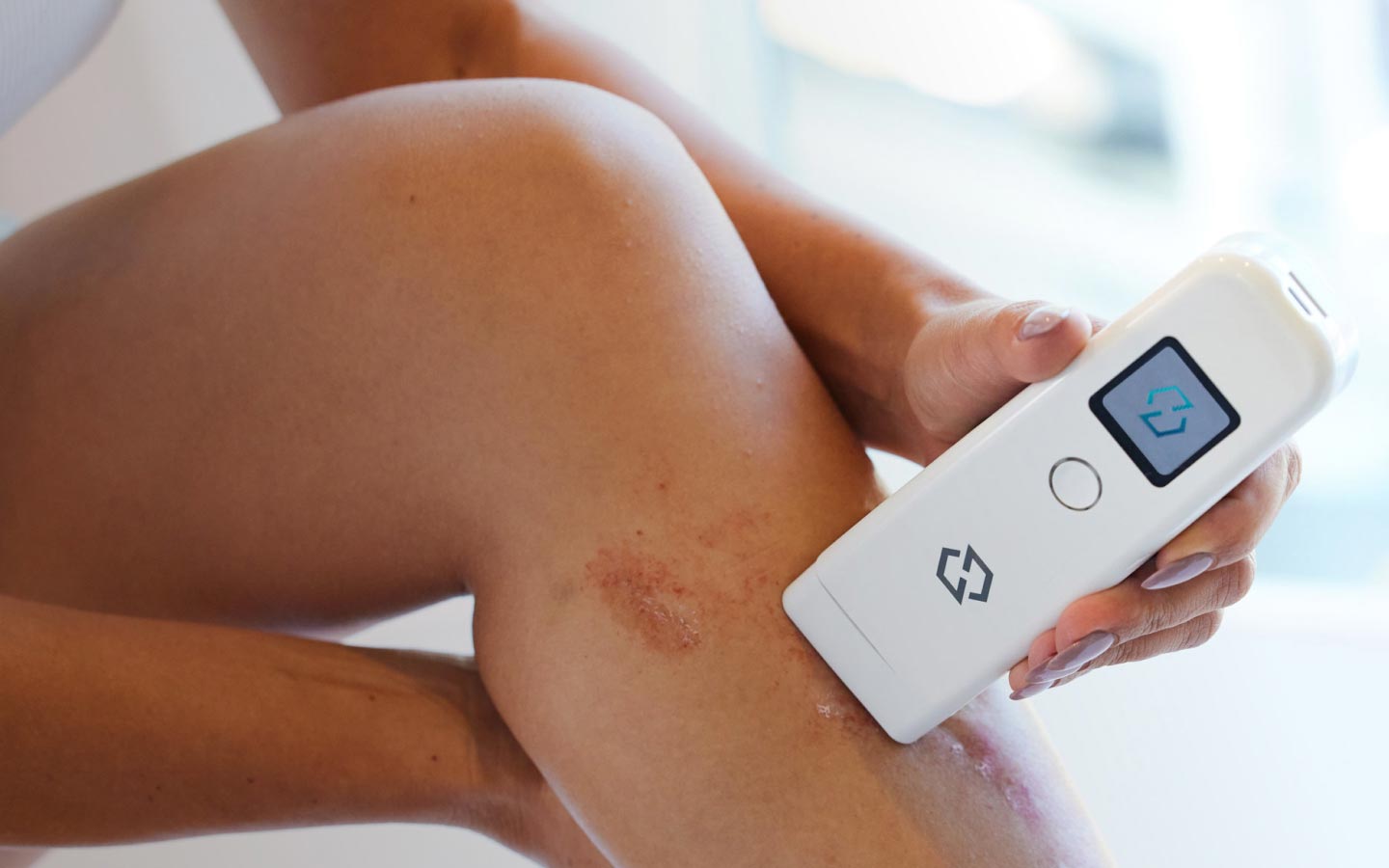
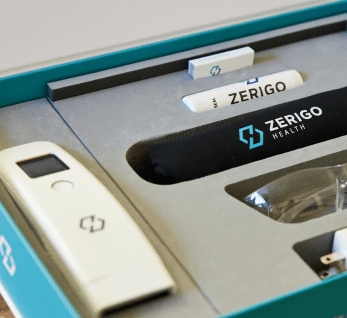
You Prescribe. We Deliver.
As a prescribing physician, you will always maintain clinical oversight and manage patient prescription and treatment to ensure continuity of care. After all, no one knows your patients like you and your care team.
Our platform generates monthly patient progress reports, which include patient progress photos and adherence data to keep you updated on their therapy progression and outcomes. Since it's HIPAA compliant patient privacy is protected.
Light Therapy. The Easy Way.
Zerigo does the heavy lifting.
Coordinating patient eligibility verification, and prior authorizations in advance with the member's sponsoring health plan
Monitoring
patient progress and
adherence daily
Managing
administrative
and billing services
Reducing the burden
for back office staff
through Zerigo
phototherapy
coordinators
Generating monthly
patient progress
reports to enable
clinical oversight
Facilitating Rx
renewals
Smart Light Therapy
vs. Conventional Phototherapy
Zerigo
(Smart Light Therapy)
Connectivity
User Friendly
Technology
Precision
Conventional
(Phototherapy)
Connectivity
User Friendly
Technology
Precision

Zerigo delivers positive
clinical outcomes and exceptional
member experience.
What Other
Doctors Are
Saying
Clinically Validated

Dermatology Online Journal
“The median patient adherence [with Zerigo] was 80%.”
— A novel ultraviolet B home phototherapy system: Efficacy, tolerability, adherence, and satisfaction

British Journal of Dermatology
“NB-UVB is clinically effective and improves quality of life in children with moderate to severe eczema….”
— Narrowband ultraviolet B phototherapy in children with moderate-to-severe eczema: a comparative cohort study

Clinical, Cosmetic and Investigational Dermatology
“Phototherapy is generally considered to be safe and well tolerated….”
— Management of atopic dermatitis: safety and efficacy of phototherapy

Psoriasis: Targets and Therapy
“Combination therapy is a viable clinical strategy.”
— Combining biologic and phototherapy treatments for psoriasis: safety, efficacy, and patient acceptability
Get In Touch
Learn more about why Zerigo Health is the smarter solution for treating symptoms of autoimmune skin conditions like psoriasis and eczema.
Please complete the form and a member of our team will reach out to you.
1When the Zerigo Health Solution is provided as a value-added benefit to patients through their employer or sponsoring health plan. 2The Zerigo Solution received FDA clearance on May 23, 2017. The Zerigo Health Phototherapy System is an Ultraviolet Light Emitting Medical Device. It is intended for use in localized phototherapeutic treatment of dermatologic conditions such as psoriasis, vitiligo, atopic dermatitis (eczema), seborrheic dermatitis and leukoderma on all skin types (I-IV). The Zerigo Health Solution is not intended to provide medical advice or be a substitution for appropriate or necessary health care treatment. 3Zerigo Health member survey, conducted May 2020.
